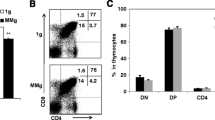Abstract
The immune responses of human lymphoid tissue explants or cells isolated from this tissue were studied quantitatively under normal gravity and microgravity. Microgravity was either modeled by solid body suspension in a rotating, oxygenated culture vessel or was actually achieved on the International Space Station (ISS). Our experiments demonstrate that tissues or cells challenged by recall antigen or by polyclonal activator in modeled microgravity lose all their ability to produce antibodies and cytokines and to increase their metabolic activity. In contrast, if the cells were challenged before being exposed to modeled microgravity suspension culture, they maintained their responses. Similarly, in microgravity in the ISS, lymphoid cells did not respond to antigenic or polyclonal challenge, whereas cells challenged prior to the space flight maintained their antibody and cytokine responses in space. Thus, immune activation of cells of lymphoid tissue is severely blunted both in modeled and true microgravity. This suggests that suspension culture via solid body rotation is sufficient to induce the changes in cellular physiology seen in true microgravity. This phenomenon may reflect immune dysfunction observed in astronauts during space flights. If so, the ex vivo system described above can be used to understand cellular and molecular mechanisms of this dysfunction.






Similar content being viewed by others
References
Benner R.; van Oudenaren A.; de Ruiter H. Antibody formation in mouse bone marrow. IX. Peripheral lymphoid organs are involved in the initiation of bone marrow antibody formation. Cell. Immunol. 341: 125–137; 1977.
Cogoli A. Space flight and the immune system. Vaccine 115: 496–503; 1993.
Cogoli A.; Tschopp A. Lymphocyte reactivity during spaceflight. Immunol. Today 61: 1–4; 1985.
Cooper D.; Pellis N. R. Suppressed PHA activation of T lymphocytes in simulated microgravity is restored by direct activation of protein kinase C. J. Leukoc. Biol. 635: 550–562; 1998.
Fitzgerald W.; Sylwester A. W.; Grivel J. C.; Lifson J. D.; Margolis L. B. Noninfectious X4 but not R5 human immunodeficiency virus type 1 virions inhibit humoral immune responses in human lymphoid tissue ex vivo. J. Virol. 7813: 7061–7068; 2004.
Glushakova S.; Baibakov B.; Margolis L. B.; Zimmerberg J. Infection of human tonsil histocultures: a model for HIV pathogenesis. Nat. Med. 112: 1320–1322; 1995.
Glushakova S.; Grivel J. C.; Fitzgerald W.; Sylwester A.; Zimmerberg J.; Margolis L. B. Evidence for the HIV-1 phenotype switch as a causal factor in acquired immunodeficiency. Nat. Med. 43: 346–349; 1998.
Goodwin T. J.; Prewett T. L.; Wolf D. A.; Spaulding G. F. Reduced shear stress: a major component in the ability of mammalian tissues to form three-dimensional assemblies in simulated microgravity. J. Cell. Biochem. 513: 301–311; 1993.
Hughes-Fulford M.; Lewis M. L. Effects of microgravity on osteoblast growth activation. Exp. Cell. Res. 2241: 103–109; 1996.
Ingber D. E. Tensegrity: the architectural basis of cellular mechanotransduction. Annu. Rev. Physiol. 59: 575–599; 1997.
Karlsson I.; Grivel J. C.; Chen S. S.; Karlsson A.; Albert J.; Fenyo E. M.; Margolis L. B. Differential pathogenesis of primary CCR5-using human immunodeficiency virus type 1 isolates in ex vivo human lymphoid tissue. J. Virol. 7917: 11151–11160; 2005.
Konstantinova I.; Rykova M.; Lesnyak A.; Antropova E. Immune changes during long-duration missions. J. Leukoc. Biol. 543: 189–201; 1993.
Margolis L. B.; Fitzgerald W.; Glushakova S.; Hatfill S.; Amichay N.; Baibakov B.; Zimmerberg J. Lymphocyte trafficking and HIV infection of human lymphoid tissue in a rotating wall vessel bioreactor. AIDS Res. Hum. Retroviruses 1316: 1411–1420; 1997.
Montgomery P. O. Jr.; Cook J. E.; Reynolds R. C.; Paul J. S.; Hayflick L.; Stock D.; Schulz W. W.; Kimsey S.; Thirolf R. G.; Rogers T.; Campbell D. The response of single human cells to zero gravity. In Vitro 142: 165–173; 1978.
Nicogossian A. E.; Pool S. L.; Uri J. J. Historical Perspectives. In: Nicogossian A. E.; Huntoon C. L.; Pool S. L. (eds) Space Physiology and Medicine. Lea & Febinger, Philadelphia, pp 3–49; 1993.
Schmitt D. A.; Hatton J. P.; Emond C.; Chaput D.; Paris H.; Levade T.; Cazenave J. P.; Schaffar L. The distribution of protein kinase C in human leukocytes is altered in microgravity. FASEB J. 1014: 1627–1634; 1996.
Schwarz R. P.; Goodwin T. J.; Wolf D. A. Cell culture for three-dimensional modeling in rotating-wall vessels: an application of simulated microgravity. J. Tissue Cult. Methods 142: 51–57; 1992.
Sonnenfeld G.; Mandel A. D.; Konstantinova I. V.; Taylor G. R.; Berry W. D.; Wellhausen S. R.; Lesnyak A. T.; Fuchs B. B. Effects of spaceflight on levels and activity of immune cells. Aviat. Space Environ. Med. 617: 648–653; 1990.
Sundaresan A.; Risin D.; Pellis N. R. Loss of signal transduction and inhibition of lymphocyte locomotion in a ground-based model of microgravity. In Vitro Cell. Dev. Biol. Anim. 382: 118–122; 2002.
Taylor G. R.; Janney R. P. In vivo testing confirms a blunting of the human cell-mediated immune mechanism during space flight. J. Leukoc. Biol. 512: 129–132; 1992.
Taylor G. R.; Neale L. S.; Dardano J. R. Immunological analyses of U.S. Space Shuttle crewmembers. Aviat. Space Environ. Med. 573: 213–217; 1986.
Tsao Y. D.; Goodwin T. J.; Wolf D. A.; Spaulding G. F. Responses of gravity level variations on the NASA/JSC bioreactor system. Physiologist 351 Suppl: S49–S50; 1992.
Unsworth B. R.; Lelkes P. I. Growing tissues in microgravity. Nat. Med. 48: 901–907; 1998.
Acknowledgements
We thank the NASA ISS team of Expedition IV and the CBOSS team at Houston, especially Keith Holubec, Amy Klein, Todd Elliot, Jennifer Miller, Dianne Hammond, Eric Warren, Ron Lockett, Melanie Bilske, John Love, Tom Goodwin, Tacey Baker, Chris Gefrides, and Neal Pellis.
Author information
Authors and Affiliations
Corresponding author
Additional information
Editor: J. Denry Sato
Wendy Fitzgerald and Silvia Chen contributed equally to this work.
Rights and permissions
About this article
Cite this article
Fitzgerald, W., Chen, S., Walz, C. et al. Immune suppression of human lymphoid tissues and cells in rotating suspension culture and onboard the International Space Station. In Vitro Cell.Dev.Biol.-Animal 45, 622–632 (2009). https://doi.org/10.1007/s11626-009-9225-2
Received:
Accepted:
Published:
Issue Date:
DOI: https://doi.org/10.1007/s11626-009-9225-2




